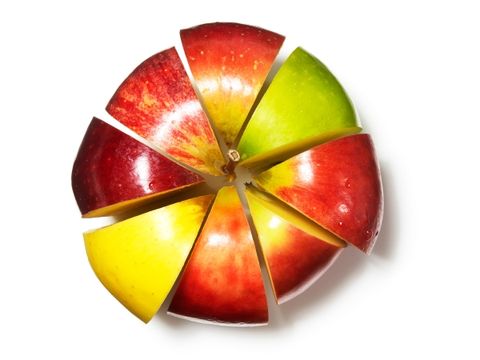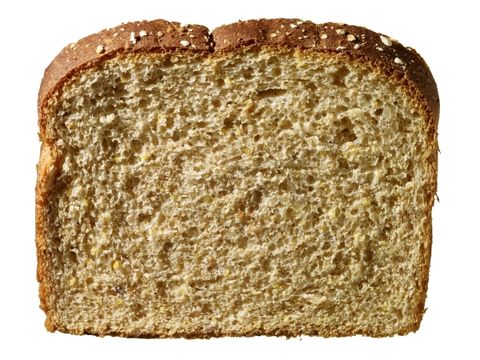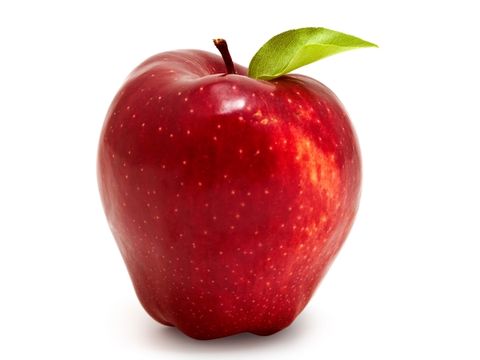What Is First Come First Serve Scheduling

1 of 8
If you're following a special diet or just trying to eat well, it's hard to know what official portions are. Nine servings of fruits and vegetables, for example, sounds a lot less intimidating when you realize that a cup of dried apricots is one serving.
Take a look at the following serving-size recommendations to know how much you're really taking in.

2 of 8
Whole Grains
Building your diet on healthly grains means that you can eat quite a few (7 to 8) portions each day; aim to make half of them whole grains.
A serving* of breads, cereals, and grains is:
1 slice of bread
1 oz dry cereal (ranges from ½ to 1¼ cups depending on the cereal)
½ cup cooked rice, pasta, or other grain
½ cup cooked cereal
1 oz raw grains
2 cups cooked popcorn
*Remember to read product labels—healthy eating portions for your diet don't always match the serving size on the label.

3 of 8
Fruit
You should choose 4 or 5 servings of fruit each day. It sounds like a lot, but keep in mind that the portions are not large.
A serving of fruit is:
6 oz (¾ cup) fruit juice
1 medium whole fruit (banana, apple, peach, orange, etc.)
¼ cup dried fruit (raisins, apricots, prunes, etc.)
½ cup fresh, frozen, or canned fruit (berries, melon, grapes, etc.)

4 of 8
Vegetables
Shoot for 4 or 5 servings of vegetables a day.
A serving of vegetables is:
1 cup raw, leafy vegetables
½ cup cooked vegetables
6 oz vegetable juice
More from Prevention: 14 Ways To Make Veggies Less Boring

5 of 8
Dairy
Aim for 2 or 3 healthy portions of low-fat or fat-free dairy foods each day.
A serving of dairy is:
8 oz (1 cup) milk (1%, skim, or low-fat buttermilk)
1 cup yogurt (fat-free or low-fat)
1½ oz cheese (low-fat or fat-free)
If you're lactose intolerant, you can get your calcium through lactose-free milk or lactase enzyme tablets, or by adding other sources of calcium to your diet, such as almonds, sardines, canned salmon, and broccoli. Adding a calcium supplement is also a good idea.
More from Prevention: 25 Things You Can Do With Yogurt

6 of 8
Fats
Keeping tabs on how much fat you add to your food will help your heart and your waistline. Aim to keep added fats down to just 2 or 3 servings per day, and emphasize more healthful fats such as olive oil and canola oil.
A serving of fat is:
1 tsp soft margarine
1 tsp vegetable oil
1 tsp low-fat mayonnaise
2 tsp light salad dressing
2 tsp diet margarine

7 of 8
Sweets
All of the treats you incorporate into your healthy eating diet should be low in fat (though a splurge now and then is fine!), but you still need to limit the number of portions you eat to 5 per week. Choosing sugar-free foods such as drink mixes, jam, mints, and gelatin is a good idea if you have a sweet tooth—you can eat them more liberally. But if you have a hankering for the real thing, your best bet is to plan for it. Know which days you're going to have a sweet, and when; you'll be less tempted to overdo the sweet stuff. (Learn more about eating sugar the smart way, including sugar-smart recipes, here.)
A serving of sweets is:
½ oz jelly beans or hard candy
8 oz (1 cup) regular lemonade or fruit punch
1 Tbsp regular jelly or jam
1 Tbsp sugar

8 of 8
Nuts
Nuts are full of beneficial nutrients like potassium and protein, as well as fiber, so feel free to enjoy them in moderation. They do contain a good deal of fat (though it's unsaturated), so limit yourself to one serving a day.
A serving of nuts is:
1½ ounces or ⅓ cup (15 almonds or cashews)
What Is First Come First Serve Scheduling
Source: https://www.prevention.com/weight-loss/g20502327/what-serving-sizes-look-like/
0 Response to "What Is First Come First Serve Scheduling"
Post a Comment